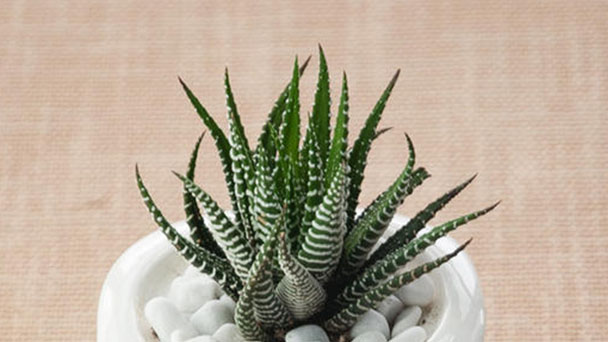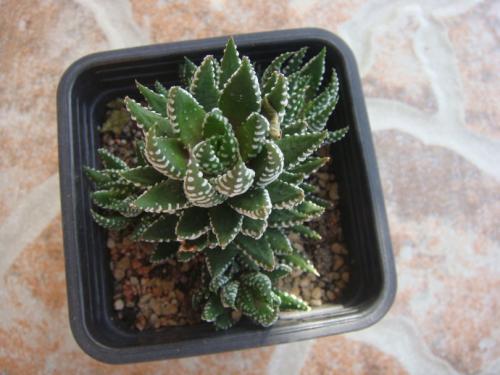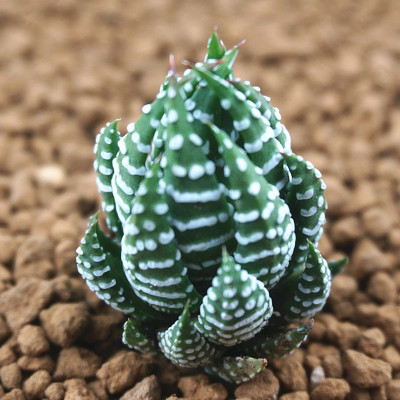Zebra Wart care-How to grow Haworthia reinwardtii
Written by Maggie
Feb 24 2021

How to grow and care for the Zebra Wart? We must first master the Zebra Wart's growth habits and requirements for soil, lighting and watering. The following are multi-dimensional maintenance methods of the Zebra Wart.
Soil care for growing Zebra Wart
Zebra Wart requires that the soil be permeable, so it's a cinder mix of peat and perlite, plus vermiculite, with cinder on the surface and a layer of ceramsite on the bottom of the pot.
Light care for growing Zebra Wart
If the zebra wart stays in shade for too long, the plants will deform and grow barren. When we grow and care for Zebra Wart, we need enough light to maintain the Zebra Wart.
Watering care for growing Zebra Wart
When we grow and care for Zebra Wart during the growing season, Zebra Wart must wait until the soil in the pot is dry before flooding it. Of course, the water in the pot is avoided.

Growing Zebra Wart care in summer
Summer dormant period because the temperature is too high, the plant is basically slow or stop growing, the bottom of the leaves sometimes a small amount of dry. When we grow and care for Zebra Wart, keep the soil moderately dry throughout the summer, and add some water to the edge of the basin once a month.
Growing Zebra Wart care in winter
The Zebra Wart slows down during the winter months. The soil stays slightly wet throughout the winter. When we grow and care for Zebra Wart, with a little water once a month, the Zebra Wart can grow slowly through the cold months.

Propagating Zebra Wart
Zebra Wart can be propagated at repotting time the use of offsets from the mom plant. When taking offsets, use a sharp knife or snippers and reduce as shut to the mom stem as feasible to encompass as many roots as possible, then enable the offset to dry quickly earlier than repotting it (similar to cuttings from different succulents). Pot the offsets in a small pot, the use of the identical soil as the mom plant. Put it in a warm, vibrant spot, and make certain to thoroughly water.
Varieties of Zebra Wart
There are about eighty species of Zebra Wart , however their classification can be complex. The principal distinction between the frequent species is the measurement of the leaves and the orientation of the white markings on the leaves. In general, the exceptional recommendation is to purchase the most pleasing range based totally on leaf shape and markings, as they all have comparable cultural requirements. Look for these:
H. margaritifera has warty white projections on the leaves.
H. fasciata elements horizontal white stripes and is every so often known as the zebra Zebra Wart .
H. bolusii have "tufted" edges to the leaves.
H. attenuata points long, pointed inexperienced leaves.
Zebra Wart pests or disease problems
Pests and ailments are not often issues for the zebra wart. However, there are a number of symptoms that the plant is getting too a lot water or sun.
If the leaves begin to flip red, the plant is getting too a lot direct sunlight.
Place it in an region with much less sunlight. Within a few weeks, the crimson leaves may additionally begin to revert to their authentic greenish color.
Black spots and wrinkling leaves each point out that the plant is getting too a whole lot water. Reduce the frequency of watering. The black spots and wrinkles ought to begin to go away.
If the hassle persists, reduce away the broken leaves, or accumulate the offsets and develop new zebra warts.
Latest Updated
- Benefits of Bugleweed - 7 Science-backed Health Benefits
- Bugleweed Dangers & Side Effects - Is It Poisonous?
- How to Plant Evergreen Trees - What You Should Know
- When to Plant Evergreens - Grow Guide for Evergreen Trees
- 12 Wonderful Evergreen Shrubs for Your Garden
- 12 Popular Evergreen Plants with Pictures for Beginners
- When And How To Prune A Lilac Bush Like a Pro
- How to Grow & Care for Lilac Vine (Hardenbergia Violacea)
- Japanese Lilac Tree (Syringa Reticulata) Care & Propagation Guide
- Shumard Oak Pros and Cons - What to Know
Popular Articles
- Winter maintenance of Antirrhinum Majus
- How to Grow Terminalia Mantaly Tree
- How to Grow and Care for Crossostephium Chinense
- How to grow Antirrhinum Majus in spring
- Peristeria Elata (Dove Orchid) Profile: Info & Care Guide
- Underwatered Snake Plant (Sansevieria Trifasciata) - Signs And How To Fix
- How to Care for Brazilian Jasmine Plant (Mandevilla Sanderi)
- How to Grow & Care for Graptopetalum Purple Delight in Summer
- Rosa Chinensis (China Rose): Plant Growing & Care Tips
- How to Care for Baby Sun Rose (Aptenia Cordifolia)